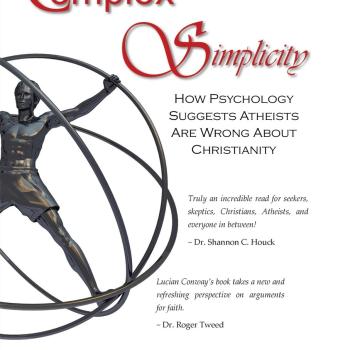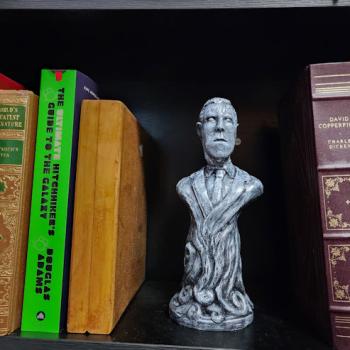
In his book The Variety of Religious Experiences, William James writes about multiple accounts of religious conversions, most of which occurred in the late 19th century. James observes that accounts of religious conversion seem to come primarily from adolescents, which makes sense given that this is a time of change and identity formation in a youth.
Upon examination of James’s stories, however, one will be quick to note that his teenage “converts” were already living in a Christian home and attending a Christian church. Their conversion experiences do not really consist of an individual who suddenly learns about religion, or is suddenly convinced that it is true. Rather, these experiences range from the supernatural (a visible encounter with a glorified Jesus or with angels, for instance) or the highly emotional (a realization of the depths of their sin, followed by a recognition of God’s love and forgiveness). These experiences result in the youths throwing themselves more enthusiastically into their religious practices, and possibly even entering the ministry. What James discovered in these stories is something called an “intensification experience.” That is to say: these people were Christian in terms of community and practice, however their religious behaviors became more focused or extreme.
It may be surprising to learn, then, that people who have deconverted usually went through an “intensification experience” while they were still religious.
The Adolescent Years
It was noticed very early in the history of conversion research that most religious conversions occur during the teenage years. The “intensification experiences” described above also usually occur during the teenage years. As investigation has turned to the topic of religious deconversion, researchers have found (unsurprisingly) that the majority of religious exits take place during adolescence, as well.
Put simply: one’s religious identity is frequently determined during adolescence. For those who have not previously been religious, this is the time to explore religion. For those who currently are religious, this may be the time to either commit more completely, or to make a decisive exit.
The Importance of Religious Identity
The secularization of America has been gradually on the incline for a century, but it has increased drastically over the last decade. Traditionally, over three quarters of Americans would have identified as belonging to some kind of religion, but currently the number of irreligious Americans is approaching almost half of the population. It is not surprising, then, that the number of deconverts is on the rise.
People who exit the church generally fall into one of two categories: those who become vocally anti-religious, and those who simply stop participating in religion. The former we will call “deconverts,” and the latter, “disaffiliates.”
A deconvert transitions from claiming to be religious into claiming to be irreligious (atheists, agnostic, and the like). A disaffiliate is a person who once claimed to be religious but now makes no identification for or against religion (usually called a “none”).
People who “disaffiliate” do so because it is easy. They do not have strong ties within the church and they also tend to have other spheres of interest and communities of support outside of religion, such that they merely replace their religious friends and activities with non-religious ones with very little difficulty. In the case of radical deconversion, however, the separation from the church environment is not nearly so simple and easy.
Individuals who deconvert, on the other hand are heavily tied to their religious identity. The loudest and most persistent of deconverts usually directly participated in the ministry. The bulk of their friends, their personal identity, their ideological commitments, and frequently, even their income are all heavily entangled with their religious beliefs.
In my research, I surveyed 32 cases of deconversion gathered from a variety of well-documented sources. These included everything from Sunday School teachers, to pastors, to missionaries, to Christian rock stars. None of my case studies were the so-called “Sunday saints” who occupied pews one day a week: they all had strong personal ties to the church community.
The Crisis
During what we have called the “processing” phase of deconversion (popularly known as “deconstruction”), the person begins to confront the beliefs he or she has which are causing difficulty, and then change or discard these beliefs in order to remove the difficulty. The more beliefs that are changed or discarded, the more difficulties arise as a result.
When the person is working in the ministry while processing, they will frequently recall a moment when they are leading some kind of sermon or course, look out at the audience, and realize that they no longer believe the things they are saying to others. An excellent example of this comes from the ex-minister Jerry DeWitt. DeWitt underwent his decoversion while he was still a minister. One of his congregants was a young lady with a tragic past who had been informally adopted by him and his family. Her faith had allowed her to cope with the various tragedies life had presented her. Jerry was near the end of his deconversion when she called him one night with a life-difficulty confronting her, and she begged him to pray for her. Knowing that he would be lying to her if he told her he could pray for her, and that being honest in saying that there was no God to whom he could pray would damage her, he describes undergoing a severe emotional crisis. DeWitt’s story is echoed in hundreds of similar stories which can be found on ex-minister sites wherein former pastors share the stories of their “deconstructions.”
The initial crisis, then, is the vacuum left in the absence of faith. Faith does a great many things for a believer. It anchors one’s hopes, values, standards, and purpose. Deconvert Rachael Slick said, “I think the most terrifying thing about losing faith is the not knowing. Because I didn’t understand that so many people operate under the comfort of saying ‘I don’t know.’”
Loss of faith isn’t all gloom and doom for deconverts. Frequently it is accompanied with a sense of relief: they no longer need to live up to impossible standards or live with beliefs which seem unsustainable. They are free to set their own standards and values.
However, finding an immediate replacement for those standards isn’t always easy, and the voices eager to assist in deconstruction aren’t always as helpful in providing a reconstruction. It took almost ten years after her deconversion for Slick to find her new values: “I believe that I am God, and that we are all just the universe experiencing itself – sort of that Eastern philosophy kind of thing – and that meaning is relative, and that the universe does not exist if it is not observed, and that cause and effect are relative.”
The largest part of the crisis, however, is the loss of community. Keep in mind that these radical deconverts were very much entrenched in their Christian identity. They were leaders in the community. They were deeply involved in ministry and support. Their friends and their family were all part of the religion. Upon leaving the religion, the one thing which tied them together with all of the other people within this community is gone.
Not only does the deconvert have to reconstruct his or her identity, but the religious community has to come to grips with the deconvert’s new status. How are they to treat this person who was once one of them, but is now one of “the enemy”? This paralysis of the community in how to treat the deconvert only compounds the pain being endured by the deconvert him or herself.
Reconstructing Identity
When one adopts a new identity, it usually relates to whatever is most pressing upon oneself at the time. A person who enters a new job may adopt an identity related to that job. A person who enters a new country may adopt the identity of an avatar of his or her homeland. Just so, a person who has freshly escaped the bonds of religion may adopt the identity of an atheist or irreligious person. This ensures that the company this person seeks will be that of other deconverts, and they will rally around the one commonality they share: aversion to religion. Unfortunately, when a group spends all of its time focused on the thing they mutually dislike, it does not have beneficial mental health effects.
Deconversion Narrative
Conversion researchers have faced a difficult question for decades: how can we measure when a conversion is completed? If one is tracking the course of a conversion experience, it is important to have a definite beginning and end.
The agreed-upon answer has mostly been “when the person can give a testimony.” This is a not-uncommon thing within churches. Any Christian called upon to stand up in church and “testify” can provide a story which places his or her entire life into perspective based on religious beliefs.
What this means is that converts can look back on their lives – even before they were religious – and describe how God or fate were working upon them in each circumstance to bring them to the place wherein they found spiritual meaning. When people can give a testimony, they can contextualize every part of their lives within their religious framework.
Upon deconversion, the reverse happens. This is a person who once had a testimony. This person was once able to see God working throughout his or her life. This person had what they once thought were religious or spiritual experiences. However, upon deconversion, the life history this person once had has to be re-written and re-contextualized in light of his or her unbelief. And this is where the deconversion narrative arises.
The deconversion narrative has four tasks:
- To explain how one used to believe what one now finds unbelievable
- To explain what once felt like spiritual experiences
- To document the process by which one exited religion
- To explain one’s current worldview
Conclusion
In order for a person to experience deconversion crisis, a significant portion of that person’s identity had to be caught up in his or her religion. The first piece of the crisis involves the void left when religion no longer forms the basis for values, hope, and meaning. The second and most traumatic portion of the crisis is the loss of community which comes with the loss of religion. The final part of the crisis involves the internal re-writing of one’s personal history to explain what one’s life was actually like once the religious explanations are removed.
It is worth noting that frequently the person will accuse their environment of “brainwashing” them into beliefs. Brainwashing involves a very specific set of techniques which some – but certainly not all – religious environments employ. More likely in most cases, the person was simply taught with all sincerity what the religious community believed to be true (however mistaken they may have been), but as the deconversion narrative is formed, the sincerity of the religious community takes on an overtly sinister and deceptive tone in the deconvert’s mind.













